Ficus trees have gained popularity due to their nearly radiant greenery, air-purifying features, and the final transformation they make in a room, turning it into a green oasis. If you’ve ever wondered how to care for your ficus tree or if it’s been on your plants’ wish list, then this is the place. In this fully informed guide, we will take you through literally everything you should know about ficus trees, starting from basic care needs all the way to expert tips on how to keep them healthy and thriving indoors.
What is a Ficus Tree?
This category of plants is called the Ficus genus which has more than 800 types, a ficus tree commonly liud rounded up as fig trees. From large outdoor trees to small indoors suitable for indoor gardening. Weeping Fig (Ficus benjamina)One of the most famous plants among this genus Ficus is The Banyan tree or Weeping fig. The ficus tree family also includes some household plants, such as the Fiddle Leaf Fig (Ficus lyrata) and the Rubber Plant (Ficus elastica).
Why Ficus Trees Make Excellent Indoor Plants
Chances are, if you have ever walked through an indoor plant store before that you have come across a ficus tree. Not only are they incredibly versatile, beautiful to look at and great for purifying the air of toxins in your home or office. Aside from being pretty, ficus trees are relatively low maintenance as far as indoor plants go (they need just the right amount of light and water and humidity).
Ficus Tree Indoor: Advantages
Indoor gardeners adore Ficus trees for a wide variety of reasons. Here are a few key benefits:
- Air Cleaners: Ficus trees, like most indoor plants reduce pollution in home by taking out toxins such as formaldehyde, ammonia and benzene.
- Decor: Bringing the outside in, these trees have full shiny dark-green leaves that add a touch of nature to any room and bring relaxation home with you.
- Long-Lasting: When taken care of, ficuses can slowly live for many chipper years or once in a while upwards of decades.
- Variety: These plants are evergreen with a tree-like appearance, its large green fiddle-shaped leaves and twiggy nature make this one of the countries favourite houseplants also is known as ficus lyrataplant; Variety: Whether you prefer a big statement plant such as Ficus Lyrata or something smaller like Rubber Plant theres definitely know at least one among all the different kinds available.
Common Types of Ficus Trees for Indoor Gardening
Before we get into the care tips, here are some of the different varieties of ficus trees you can grow indoors:
1. Fiddle Leaf Fig (Ficus lyrata)
The Fiddle Leaf Fig has become very popular in the last few years due to its big, violin-shaped leaves and is really great for those who desire to make bold, green statements with one single plant in their homes.
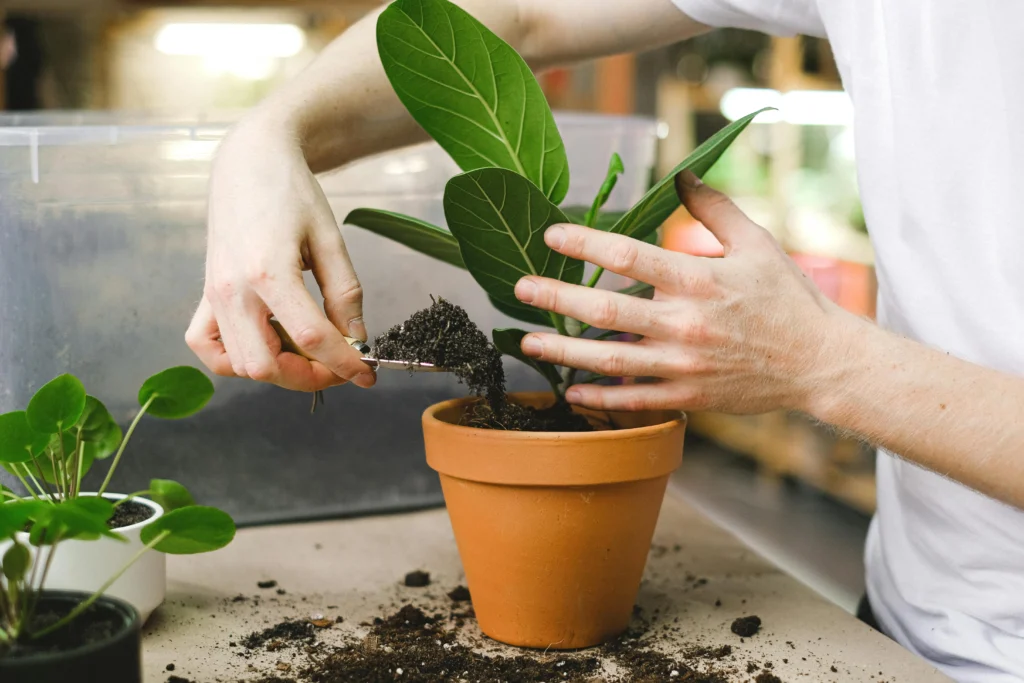
2. Rubber Plant (Ficus elastica)
The Rubber Plant is another very popular indoor ficus tree known for its thick, leathery leaves. Therefore, it is an ideal plant to make your interior green and the different types of syngonium are available from deep burgundy colour to variegated varieties which makes this evergreen attractive.
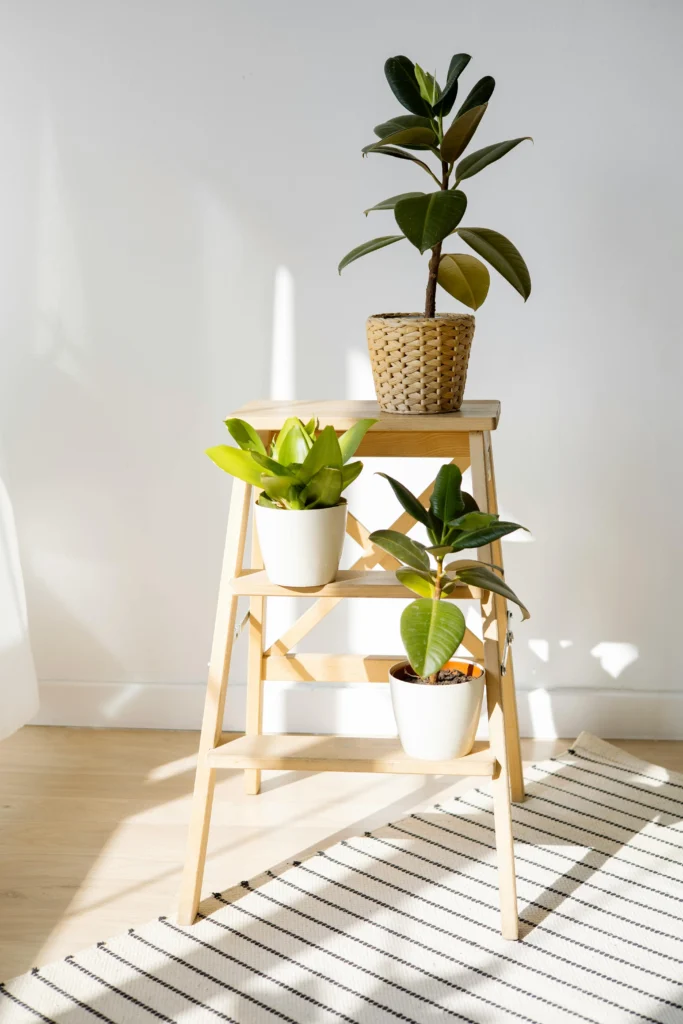
3. Weeping Fig (Ficus benjamina)
Weeping Fig : A popular variety of Ficus tree, the Weeping Fig sports small elongated leaves and an elegant drooping form. Because of its graceful structure and the properties that purify air, it remains a favorite in offices and houses.
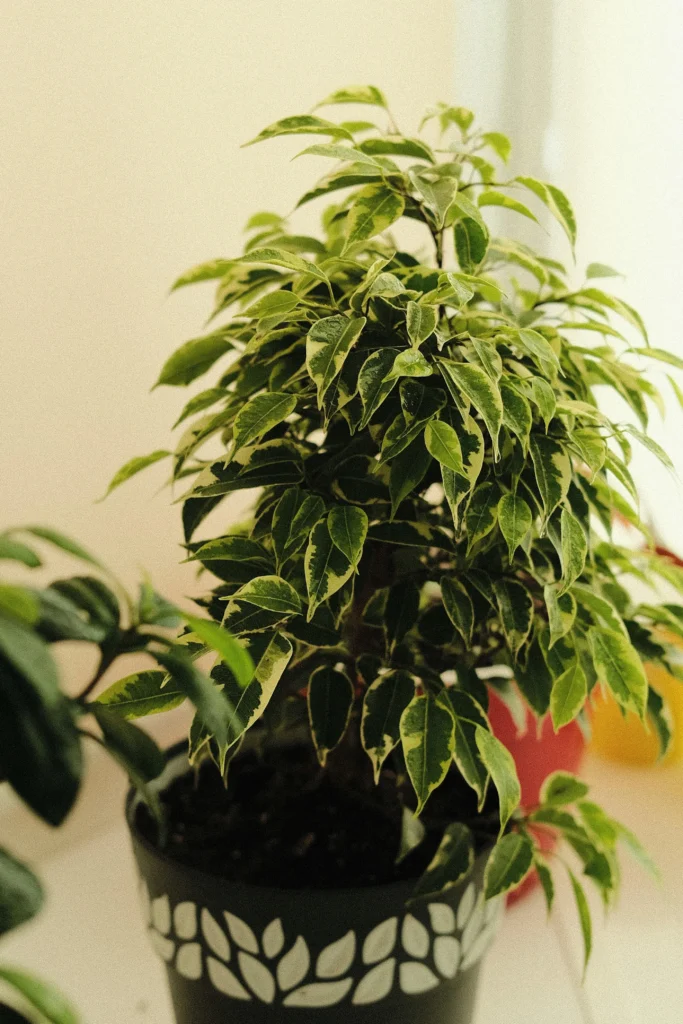
4. Ficus Audrey (Ficus benghalensis)
A relative newcomer to the indoor-gardening scene, Ficus Audrey makes its statements with velvety leaves and a more low-key profile compared to its relatives. It’s way easier to take care of compared to the Fiddle Leaf Fig and an excellent option for people starting out.
5. Ficus Alii (Ficus maclellandii)
Ficus Alii bears long, narrow leaves that give it a very tropical feel. It’s less finicky than some of the other ficus trees and thus a great choice for those new to houseplant care.
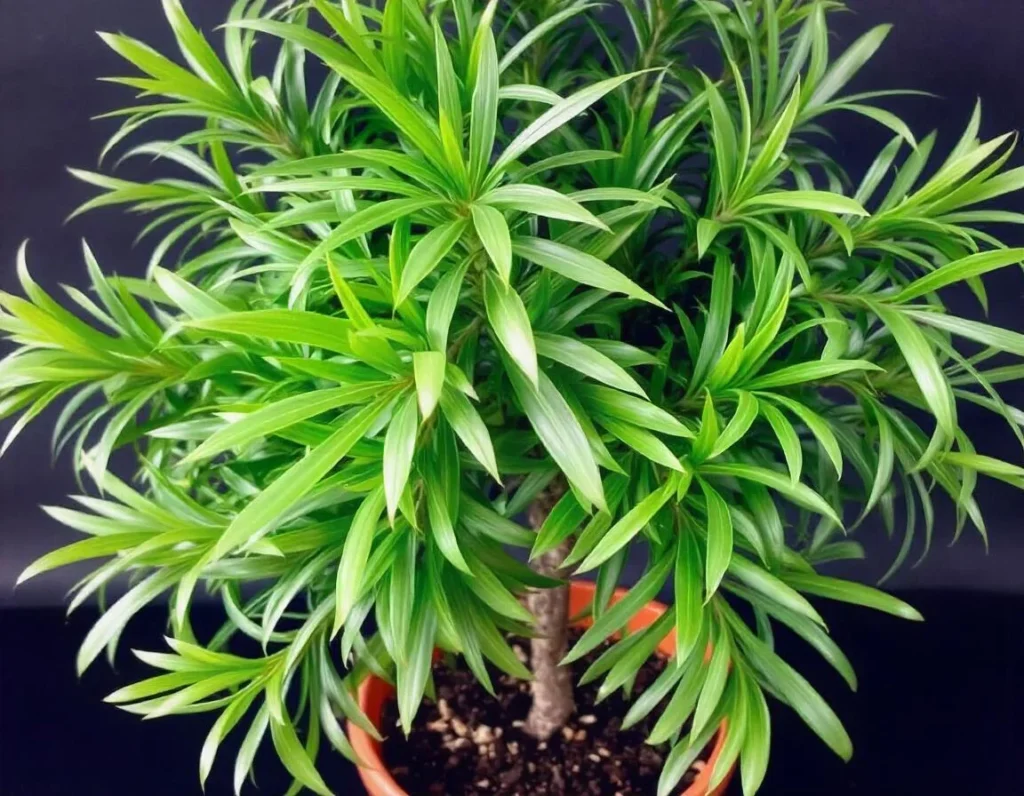
Essential Care Tips for Ficus Trees
With the discussion of the various types of ficus trees, the focus now shifts to how one may care for them. Though each may have its particular requirements specific even to that very type, there exist general guidelines shared by most ficus trees.
Light Requirements for Ficus Trees
Light One of the key factors to keep a ficus tree healthy is proper lighting. Ficus prefer bright, indirect light. Put your plant near a window that get direct sun could burn the leaves.
When ficus are not getting sufficient light, they may lose their leaves, which is a general sign of stress. If this occurs, move it to a sunnier place. During the Winter months and shorter Daylight you might want to supplement your plant with a grow light for enough illumination.
Watering Your Ficus Tree
Ficus trees should be water regularly but moderately. Water when the top inch of soil becomes dry, but do not allow the roots to be overly wet or too arid as well. Excessive watering results to rotting of roots while insufficient water will result in the leaves dropping off.
Here are some tips for youTo create Iterated watering:
During the winter months when plants are not growing as rapidly, slow down on watering.
Put your plant inside a pot with drainage holes, so water can not accumulate in the bottom.
These are plants watered by giving them a good soaking (letting excess run out through drainage holes when indoors) and then waiting until the top inch or so of their soil dries before watering again.
Humidity Needs
Where a ficus tree originated from tropical or subtropical regions, which have higher humidity. Anything around 50% or above should be good. If your home is dry, as it may be during the winter season consider placing a humidifier nearby or even expose the plant on top of a tray filled with water to boost humidity levels.
Spritzing the leaves every so often can also be useful but make sure not to overdo as too much water on your plants foliage will leave it susceptible for fungus issues.
Soil and Fertilization
Ficus trees prefer a potting mix that is well-draining but on the flip side has a little bit of retention without being waterlogged. You can use a regular indoor plant mix, and you add perlite or sand to it. That’ll be enough. Avoid using heavy or clay-based soils because they will choke the roots.
Fertilize your ficus tree with a balanced liquid fertilizer during the growing season, spring and summer, every 4-6 weeks. Ease off feeding during the fall and winter months when the plant goes through a natural resting period.
Pruning and Maintenance
How to Prune a Ficus Tree Picture your average ficus tree. Prune any dead or yellowed leaves and shape the plant to make it look more full by pruning back leggy branches. Keep your ficus tree pruned year round, but do major trimming in the spring while it’s actively growing.
Repotting Ficus Trees
Ficus trees desire extensive room for their roots to spread out, usually requiring repotting every 2-3 years. When repotting, use a pot that is 1-2 inches bigger in diameter than the current one. Use new potting soil and have good drainage on your newest pot.
Not only does this give it more room to grow, but also at the same time your plant gets a refresh when it comes to new soil and nutrients. If your ficus is root-bound, with its roots wrapping around the edges of a pot and devouring everything in their sights, it may be time for an upgrade to shall we say more spacious accommodations.
Common Problems and Solutions for Ficus Trees
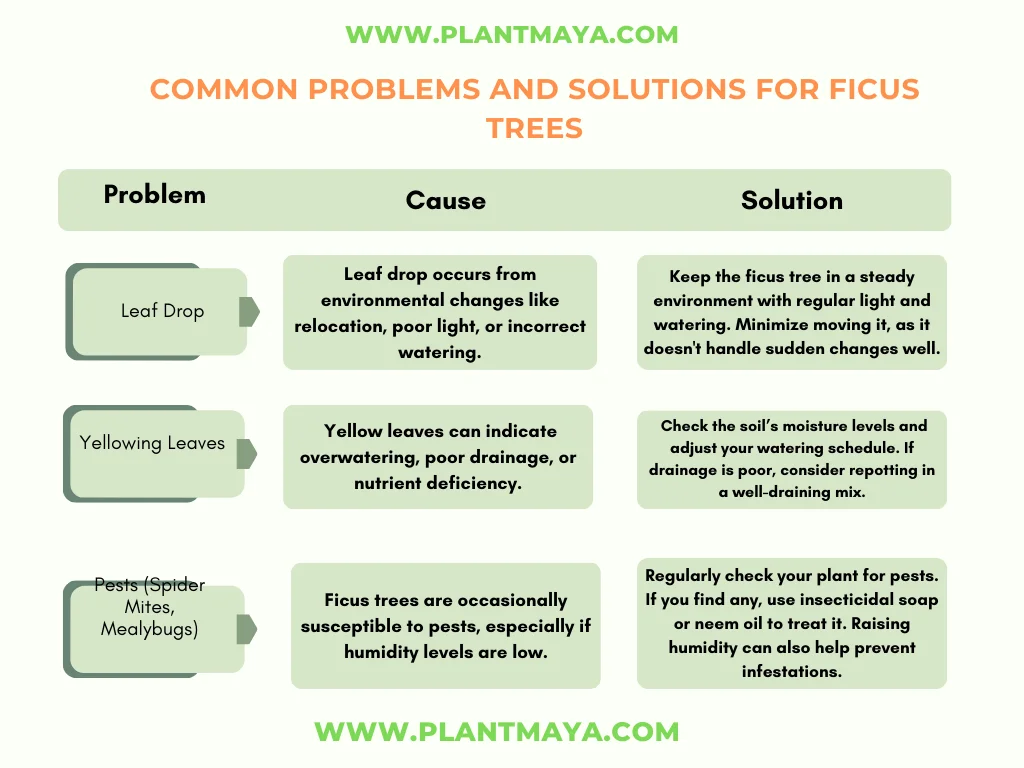
How to Propagate a Ficus Tree
WanHow to Propagate a Ficus Tree
Do you wish to propagate more ficus trees from your plant? Ficus trees are rather simple to reproduce using stem cuttings. Follow this simple step-by-step guide:
- Pick a Healthy Stem A 4-6 inches long stem with one leaf node is good.
- Cut: use sharp scissors and cut just below a leaf nodePrepare 1. Pull off any of the lowest leaves on the stem
- Plant the Cutting: Gently sow the cutting in a pot of well draining, but slightly moist seed starting mix. The node should be buried in the soil.
- Moisture: Enclose the cutting in a plastic bag, or have it sit in a propagation tray to keep things more humidendo 5.
Patience with Roots Keep the soil moist and situate your cuttings in indirect light Although I would have to wait a few weeks for the roots to grow.
The Best Spots for Your Ficus Tree
A good place where your ficus tree would look its best and grow naturally. Place your ficus tree in a room where it can receive lots of bright, indirect light if possible. So lets know where we can put our ficus inside some recommendations.
- East or west: Good light but not enough .
- Living Room Corners and Filtered Light: If you have a room that gets some light through the curtains, These will all be perfect conditions for the plant to flourish with indirect light!
- Near Large Glass Windows: this will help in the availability of sunlight (especially if there is a bit of protection from direct sunlight at specific times during the day) and the growth continues.
Ficus trees are not a fan of change. After you have discovered a section that meshes with the tree’s light demands, attempt to keep it within this position .
How to Maintain Humidity for Your Ficus Tree
As I mentioned above, ficus trees are tropical plants and, by their very nature, they will be adapted to living in a relatively high humidity. If you find yourself in an exceptionally dry climate, or you notice that your home air is particularly dry through winter months, here are a few ways you can ensure that the humidity levels are well within the ideal range for your ficus tree.
- Humidifier Application: You can use a small humidifier close to your plant to raise the air moisture level for your ficus tree.
- Group Plants: By grouping plants in proximity, the humidity automatically increases because plants go about releasing moisture in the air as a part of their respiration process.
- Pebble Tray Method: Place a shallow tray filled with pebbles and water under your ficus tree’s pot. As the water evaporates, it’ll increase the humidity around the plant.
- Mist your plant’s leaves very lightly to temporarily raise the humidity. Do not go overboard with this or it may cause fungal problems in overly moist leaves.
The Importance of Air Circulation for Ficus Trees
Good air circulation is crucial for the health of your ficus tree. Just like in their natural environment, where The Need for Circulation of Air around the Ficus Tree
Good air circulation is rather essential for the health of your ficus tree. Like in their natural habitat, where the wind strengthens trunks and leaves by making them flexible, indoor ficus trees also require a gentle breeze.
- Fan Ceiling: Keeping a ceiling fan running in the room will keep the air moving, besides strengthening your plant it will also help in reducing the chance of infestation from pests like spider mites, which do not get along in moving air.
- Opening Windows: If at all possible, open a window to provide a flow of fresh air within the room. This will aid in reducing the build-up of moisture that commonly causes fungal problems on the leaves.
Seasonal Care for Your Ficus Tree
Just like outdoor plants, indoor ficus trees experience seasonal changes. It’s important to adjust your care routine tSeasonal Care for Your Ficus Tree
Just like the outdoor plants, the indoor ficus trees also have their seasonal changes. And this you must also take into account to maintain healthiness in the plant.
Spring and Summer
During these three summer months, the ficus tree reaches its active growing phase. Meaning they will require more water and nutrients due to the growth which is taking place.
More Watering: With increased temperatures, your ficus tree may require increased watering. You must check the soil frequently, and when the top inch of soil becomes dry, then this means it is time to water.
Fertilize: Feeding your ficus tree with a balanced liquid fertilizer every 4-6 weeks in the growing season offers you an enchanting growth.
Repotting: Spring is an excellent time for repotting if your plant has outgrown its pot into a larger container to accommodate the growing roots.
Fall and Winter
The ficus tree begins to go into a state of dormancy during the fall and winter months. During this kind of phase, growth is slow. You will be able to cut back on the watering and fertilizing at this point.
Water Less: Ficus trees can be watered less during the fall and winter months, as the plant will grow slower and does not need as much moisture.
Do Not Fertilize: Since your plant does not need to grow, there would be no need to fertilize. The plant is dormant and will not be using much nutrients.
Keep High Humidity: Indoor air has a tendency to be dry throughout winter. You need to keep moisture in the atmosphere around the plant high via a humidist or some otr means.
How to Prevent and Treat Common Ficus Tree Problems
Problems can happen to even the best-cared-for Ficus trees. Following are some common problems and ways to deal with them:
Leaf Drop
Symptom: Yellowing and Loss of Leaves
Cause:Changes in the plant environment It can occur when you move your Ficus to a new location, drafts or temperatures that suddenly change.
Solution: Do not move your ficus tree unless it is absolutely necessary. The box should not be exposed to cold drafts or radiators, heaters and air conditioning vents. Keep moist and humid evenly.
Root Rot
Symptom: Leaves might become yellow and the soil may start smelling.
Cause: Root rot is the result of overwatering that drowns your succulent, leading to dying root.
Solution: Avoid root rot by planting the tree in a container with drainage holes and allowing to dry out between WL’s. Repot in fresh, dry soil and cut away any roots you suspect are rotten.
Pest Infestations
Symptom: Spotting tiny insects in the likes of spider mites, mealybugs or aphids on your ficus.
Cause:In situations of inappropriate care, unfavorable growing environments can more easily occur such as low humidity which then leads to pests.
Solution:Check for pests on your ficus tree consistently. If you find any, pull the plant and manage it with insecticidal soap or neem oil. Other than that it reduces the chances of pests to keep away their invaders.
How to Style Your Home with Ficus Trees
ficus trees could add a touch of decoration to any room. Here are some creative ways you could style your ficus:
- Corner Accent: Settle a tall ficus tree like a Fiddle Leaf Fig against a blank corner of a living room or bedroom to create a dramatic focal point.
- Clustered Greens: Group several species of ficus together, such as a Rubber Plant and Weeping Fig, for a lush indoor garden appeal.
- Hanging Basket: Varieties within the ficus category, which are relatively smaller, such as Ficus pumila, commonly known as Creeping Fig, are grown in hanging baskets for a display of verdure on vertical spaces.
- Office Plant: A weeping fig or rubber plant brings a little bit of nature into your workplace, helping to purify the air and cut down on stress.Looking for inspiration on how to plant styling ideas from an expert? Check out this IKEA guide for creative decor ideas.
Fall in Love with the Ficus Tree
For those who have a number of years experience with indoor gardening, or even those just starting out, the ficus tree is one of the best options for adding greenery and life to your home. Able to thrive with proper care, these trees offer such a striking appearance they naturally become favorites with any plant lover.
And if you thought it ended there, you’d be wrong. From the dramatic and beautiful Fiddle Leaf Fig to the virtually indestructible Rubber Plant, there’s a ficus tree for every interior space. Just give your ficus the proper amount of light, water, and humidity, and it will most surely reward you with years of beauty and air-purifying benefits.
So, if you are ready to put a ficus tree into your indoor garden, then now is the time to accept this classic among classics. If cared for properly and paid the right attention, your ficus can develop into a handsome long-lasting addition to your home.
Thanks for reading! We also invite you to check out other indoor plant care guides on our site for even more inspiration.








